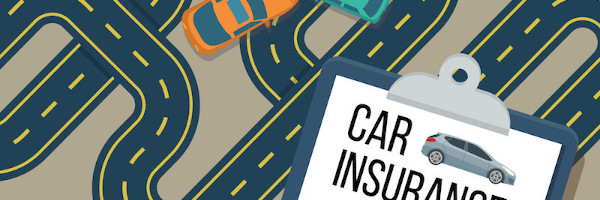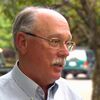Self Driving Policies and Procedures
- Authors
Since 2012, 41 states and the District of Columbia have considered legislation relating to AVs. 21 states and the District of Columbia have passed AV legislation. Additionally, the governors of Arizona, Massachusetts, Washington, and Wisconsin have signed executive orders relating to AVs.
- State Level Policy
While each piece of legislation attempts to ensure public safety while encouraging innovation, they all vary in approach, creating challenges for AV developers operating or planning to operate across state lines. This patchwork of legislation ranges from basic to robust requirements for automated vehicles which has resulted in the AV industry advocating for federal (rather than state-by-state) regulation of autonomous vehicles to ensure consistency and encourage innovation.
- Federal Role
In September 2017, the U.S. Department of Transportation (USDOT) released Automated Driving Systems 2.0: A Vision for Safety (2.0). The policy updates the Federal Automated Vehicles Policy (FAVP) released in September 2016 by the National Highway Transportation Safety Administration (NHTSA) under the Obama administration.
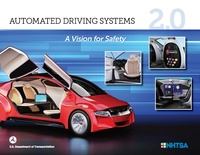
The U.S. DOT releases new Automated Driving Systems guidance FAVP released in 2016 was the federal government’s first attempt to set up a centralized regulatory framework for AVs. The guidance is divided into four sections: Vehicle Performance Guidance for Automated Vehicles, the Model State Policy, NHTSA’s Current Regulatory Tools, and New Tools and Authorities. It established a 15-point safety assessment for manufacturers, outlined state and federal roles in regulating AVs, and explained how NHTSA would and could use existing regulatory tools to manage AV testing and deployment. NHTSA’s updated 2017 guidance eliminates three recommendations from the FAVP concerning privacy; registration and certification; and ethical considerations revising the safety assessment for manufacturers to 12 points. 2.0 generally includes less stringent regulations. It seeks to make the “regulatory processes more nimble” and remove “barriers to innovation.” One of the AV industry’s major concerns with the FAVP had to do with the mandatory safety assessment letter (SAL) addressing each performance guideline. The 2.0 policy suggests companies submit a voluntary safety self-assessment. While the two policies take different approaches to federal regulation, they take a similar view on the delineation of federal and state regulatory responsibilities. Historically, the federal government has regulated motor vehicles and motor vehicle equipment, while states have been responsible for regulating the driver. 2.0, like the FAVP, suggests this division of regulatory responsibilities should remain.
The 2.0 policy emphasizes DOT should maintain responsibility over the nation’s infrastructure system, interstate motor carriers, commercial vehicle drivers, and registration and insurance requirements. The policy specifies that states should “allow DOT alone to regulate the safety design and performance aspects of Automated Driving Systems: Voluntary Safety Self (ADS) technology.
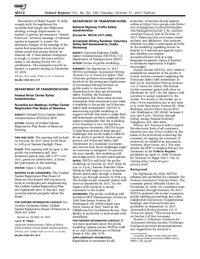
Another important element of the 2.0 policy is it outlines best practices for state legislatures. These include providing a ‘technology-neutral’ environment, providing licensing and registration procedures, reporting and communications methods for public safety officials, and reviewing traffic laws and regulations that may serve as barriers to AV deployment.
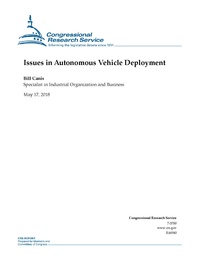
Considering the pace of autonomous vehicle innovation, DOT anticipates that it will continue to update its regulatory guidance on an annual basis. In fact, Version 3.0 is already underway. NHTSA published a notice for public comment on “Removing Regulatory Barriers for Automated Vehicles” on January 10, 2018. In addition to its existing authority to issue federal vehicle safety standards and order recalls of defective vehicles, NHTSA has other tools it can use to address the introduction of new technologies: letters of interpretation, exemptions from current standards, and rulemakings to issue new standards or amend existing standards.
Look for 3.0 to be released in September if historical trends hold. The previous policy guidelines were published in the same month.
- Congressional Action
SELF DRIVE Act
On September 6, 2017 the House of Representative passed its first piece of AV legislation, the Safely Ensuring Lives Future Deployment and Research in Vehicle Evolution (SELF DRIVE) Act, H.R.3388. The SELF DRIVE Act seeks to outline a clear federal regulatory path for developing, testing, and deploying AVs. The bill focuses on the following:
- State Preemption: States may continue to regulate licensing, registration, liability, safety inspections and certain other aspects of vehicles and their operation. However, states would be preempted from passing laws regulating the design, construction, or performance of AVs and their component parts unless they are identical to a standard prescribed under federal law. The preemption language should begin pushing toward a regulatory regime that avoids a patchwork of differing requirements that could stifle the rollout of AVs.
- Safety Standards: Under the legislation, USDOT must issue a final rule requiring AV developers to submit certificates explaining how they are addressing safety concerns every five years. However, USDOT may not condition AV deployment based on the certificate.
- Safety Priority Plan: The bill would require USDOT to create a safety priority plan that outlines which federal safety standards need to be updated to reflect AV technology.
- Cybersecurity: The legislation requires manufacturers to develop and publicize to consumers their cybersecurity and data privacy plans.
- Exemption Authority: The bill would exempt 100,000 vehicles per manufacturer per year from current safety standards for testing purposes. Currently that number is 2,500. To qualify for an exemption, the petitioning manufacturer must demonstrate that the safety level of the system or feature at least equals the safety level of the standard for which exemption is sought or that the vehicle provides an overall safety level at least equal to the overall safety level of non exempt vehicles. Manufacturers would be required to provide information about all crashes involving exempted vehicles of which the manufacturer becomes aware. The bill would also require NHTSA to create a searchable public database of exempted vehicles.
- Highly Automated Vehicle Advisory Council: The legislation would require NHTSA to create a new advisory group made up of 30 members from business, academia, states and localities, and labor, environmental, and consumer groups.
AV START Act
On October 4, the Senate Commerce, Science and Transportation Committee passed S. 1885, the AV START Act out of committee. Despite concern from both parties, AV START passed with bipartisan support. The AV START Act is the first piece of AV legislation passed by the Senate and mirrors much of what is included in the House SELF DRIVE Act. Where the two pieces of legislation differ is on preemption of state laws, exemptions to FMVSS, and other topics that would need to be resolved in conference.
- Other Transport Oriented Smart City Legislation
Grant/IOT/Smart Infrastructure Legislation
Legislation to develop grant programs, promote smart technologies and systems and generally advance IOT have been introduced in the 115th Congress. The Moving FIRST Act (H.R. 3901) would require USDOT to establish the Strengthening Mobility and Revolutionizing Transportation (SMART) Challenge Grant Program to promote technological innovation in US Cities. The Smart Cities and Communities Act of 2017 (S. 1904) would promote smart technologies and systems by improving Federal Government coordination, promote quality and performance of smart city/community technologies, demonstrate value and utility through development and implementation of performance standards, provide technical assistance, aid workforce development, and expand international cooperation and trade.
- 2018 Outlook
In should result in increased federal action on CAVs. Congress is likely to pass an AV bill. Informal pre-conference meetings have begun in the House and Senate to reconcile differences in the AV Start and SELF DRIVE Act which is an optimistic sign legislation could pass before the summer. This year should also see USDOT expand its role in AV development. The agencies 3.0 guidance will go beyond AV design and performance to address actual implementation of autonomous driving technologies.
